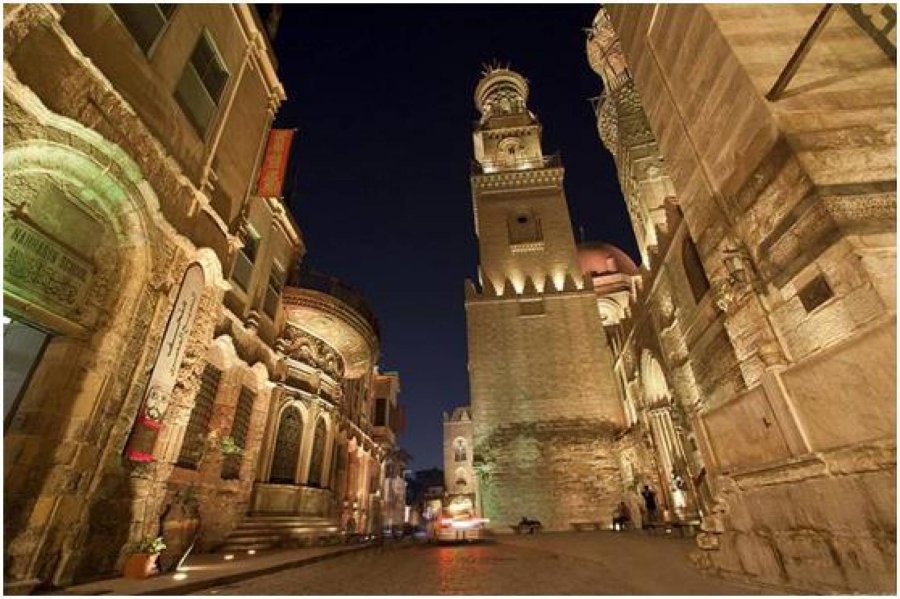
- Company Profile
-
Egypt Ala CarteEgyptCairoAlexandriaSharm El ShiekhHurghadaAin El SokhnaNew ValleyLuxorAswanMarsa AlamUpper EgyptSant CatherineTabaSoma BayEl GounaSahal HasheeshEl QuseirDahabSiwaFayoum
- Travel Services
HotelsNile CruisesGolfSafariExcursionsMiceMeet AssistAhlan Airport ServicesAviation- Holidays
Niche TourismHoneymoonerReligious TourismWellnessHajjUmrah- International Travel
Description
Umrah and its Virtues :
Linguistically, “Umrah” is derived from the Arabic word “I’timar”, meaning “visit”, whereas religiously it refers to the act of visiting Kaa’ba and performing Tawaf, then Sa’i seven times between Safa and Marwa. Umrah is generally considered as the minor pilgrimage that can be performed at any time of the year, except for the days of Hajj, given that the latter differs from the former in the sense that it is a pillar of Islam and an obligatory duty to be performed by every adult, capable Muslim. Umrah can also be performed more than once as per the individual’s health and financial ability. There are many hadiths on the virtue of Umrah, notably what has been narrated by Abu Hurairah – the Prophet (peace be upon him) said, “The performance of Umrah is expiation for the sins committed between it and the previous ones. And the reward for Hajj Mabrur (pilgrimage accepted by Allah) is nothing but Paradise.”
Pillars and Steps of Umrah :
Umrah has three main pillars that must be observed by every Muslim seeking to perform it correctly:- Ihram
- Tawaf
- Sa’i
The Muslim enters into a state of Ihram – a holy state that a Muslim must be in to perform Hajj or Umrah – upon reaching one of the Miqats (pilgrimage boundaries) identified by the Prophet (peace be upon him) for all pilgrims :- Dhu'l-Hulayfah : This miqat is now called Abar Ali, and it is the furthest from Maccah. It is mainly for those who live in Madinah and for those who approach Maccah from the direction of Madinah.
- Juhfah : This miqat is for the people who come from the direction of the Levant countries, Egypt, Sudan, Morocco and other places en route.
- Qarn ul-Manazil : Also known as Miqat Al-Sail Al-Kabir, serves pilgrims coming from the Najd region, the GCC countries and other places en route.
- Yalamlam : This miqat serves the pilgrims from the direction of Yemen, and was named after Yalamlam Mountain.
- Dhat-i 'Irq : This mīqāt serves pilgrims coming from the direction of Iraq and other places en route.
When the Mu’tamer reaches the miqat, it is recommended (mustahab) to wash and cleanse before discarding all stitched clothing and wearing the Ihram attire, consisting of seamless white clothing for men. Women may wear regular plain clothing.
He then speaks the niyyah (intention) to enter Ihram in his heart, and utters the phrase, “Labbayk allahumma Umrah,” followed by the talbiyah of the Prophet (peace be upon him): “Labbayka Allahumma Labbayk. Labbayk La Sharika Laka Labbayk. Inna l-Ḥamda, Wa n-Niʻmata, Laka wal Mulk, La Sharika Lak.” (Translated as:“Here I am at Thy service O Lord, here I am. Here I am at Thy service and Thou hast no partners. Thine alone is All Praise and All Bounty, and Thine alone is The Sovereignty. Thou hast no partners.”) He keeps repeating it until he reaches the Kaa’ba, wherein he approaches the Black Stone and kisses it, or points at it and uttering takbir (Allahu Akbar) if unable to reach it.
Following that, the Mu’tamer begins his Tawaf, i.e. circling the Kaa’ba seven times, while touching the Black Stone and kissing it every time he passes it, or else pointing at it as indicated above. After completing the Tawaf, the Mu’tamer shall pray two rak’aas behind the Kaa’ba or any other place in the mosque, reciting after Surat Al-Fatihah Surat Al-Kafirun in the first rak’aa and Surat Al-Ikhlas in the second rak’aa.
After completing the Tawaf, the Mu’tamer will begin his Sa’i between Safa and Marwa, i.e. walking rapidly between the two points. Beginning with Safa, the Mu’tamer utters,“Indeed, as-Safa and al-Marwah are among the symbols of Allah.” (2:185) and whichever prayers he prefers, before walking rapidly towards Marwa and repeating what he did at Safa.
Upon completing the Sa’i, the man shaves his hair or shortens it, while the woman gathers her hair and cuts an equal amount or less.
Once the Mu’tamer performs all these steps, he has successfully completed his Umrah – Allah willing – and is entitled to anything that was forbidden to him in the state of Ihram.
Sunnat of Umrah :
The Mu’tamer can perform a number of sunnats (plural of sunnah, which means the traditional practices of Islam) during his Umrah, which include the following:- Ghusl (full body purification).
- Using perfume (before Ihram).
- Wearing white Ihram clothes.
- Talbiyah and reciting from the Quran during Ihram.
- Going into the state of Ihram after a prayer of two rak’aa.
- Walking at a quicker pace in the first three laps.
- Kissing Al-Rukn Al-Yamani (the southwestern corner or rukn of the Ka'bah).
- Kissing the Black Stone or pointing to it with the right hand.
Restrictions of Ihram :
Below is a list of actions that could cause the Mu’tamer to break the state of Ihram if intentionally made:- Removing hair.
- Cutting fingernails.
- Using perfume or any scented product after Ihram.
- Covering the head (for men).
- Wearing stitched clothing (for men).
- Wearing niqab and gloves (for women).
- Acting on any lustful desire.
- Intercourse.
- Hunting.
Share:Lastest News
-
Classical Cairo & Sharm Elsheikh - 10 days From $ 985 per person
Minerva Travel & tours
-
Top experiences in Cairo 9 * Sharia Al Muizz Li Din Allah
Minerva Travel & tours
-
فندق لـــيدر المنى كريم
Minerva Travel & tours
-
Private Day Tour Egyptian Museum & Architectural Treasures Fatimid
Minerva Travel & tours
-
The New Valley in Egypt - Part 2
Minerva Travel & tours
Email to friend
You need to Login to add item in your wish list
- Travel Services




